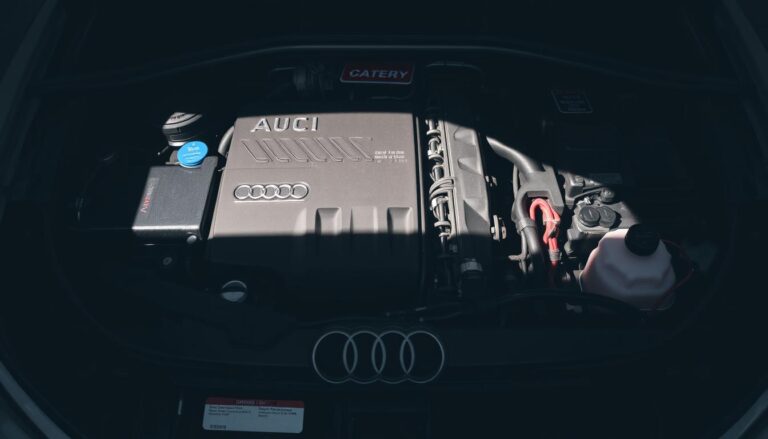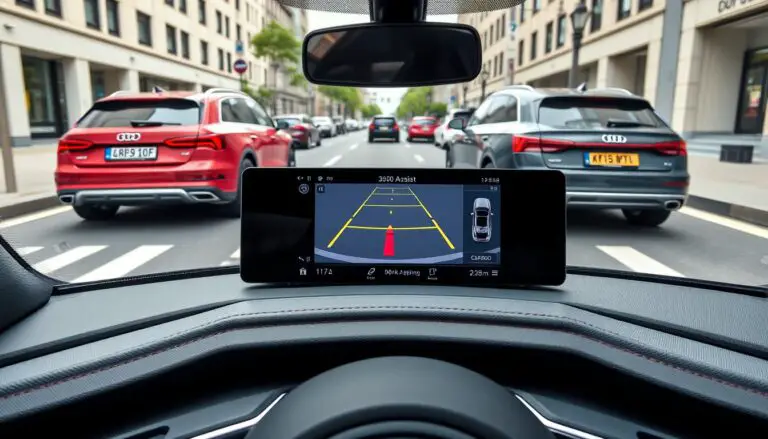The restraint system in your Audi is a sophisticated network of safety components designed to protect you and your passengers during accidents. When you see the dreaded “Restraint System Malfunction” warning on your dashboard, it signals a potential compromise in this critical safety system.
This comprehensive guide explains what causes these malfunctions, how to identify warning signs, and what steps to take to ensure your Audi’s safety systems remain fully operational.
Understanding Audi’s Restraint Systems
Audi’s comprehensive restraint system includes multiple integrated safety components
Audi’s restraint system, also known as the Supplemental Restraint System (SRS), is an intricate network of safety components working together to protect vehicle occupants during collisions. This system goes far beyond just airbags, incorporating multiple elements that respond within milliseconds of an impact.
Key Components of Audi’s Restraint System
- Airbag Modules: Front, side, knee, and curtain airbags strategically positioned throughout the vehicle
- Seatbelt Pretensioners: Devices that instantly tighten seatbelts during a collision to secure occupants
- Force Limiters: Components that release seatbelt tension slightly after initial impact to prevent chest injuries
- Crash Sensors: Multiple sensors throughout the vehicle that detect impacts and their severity
- Airbag Control Module: The central “brain” that processes sensor data and determines when to deploy safety features
- Occupant Detection System: Sensors that determine if seats are occupied and adjust airbag deployment accordingly
- Clockspring: Allows electrical connection to steering wheel airbag while enabling steering wheel rotation
- Wiring Harness: Complex network of wires connecting all system components
These components work in perfect synchronization, continuously monitoring vehicle conditions and ready to activate within milliseconds when needed. The system’s complexity, while providing exceptional safety, also means multiple potential points of failure that can trigger a malfunction warning.
Common Causes of Restraint System Malfunctions in Audi Vehicles
Restraint system malfunctions in Audi vehicles can stem from various sources, ranging from simple connection issues to more complex component failures. Understanding these common causes can help you better communicate with your technician and make informed decisions about repairs.
Easily Fixable Issues
- Loose Connections: Often occurs under seats after service work or seat adjustments
- Battery Voltage Problems: Low battery charge can trigger false warnings
- Minor Wiring Issues: Small harness damage that can be repaired without replacement
- Software Glitches: Temporary errors that can be resolved with system resets
More Serious Problems
- Faulty Crash Sensors: Damaged or deteriorated impact sensors requiring replacement
- Airbag Control Module Failure: Central computer system malfunctions
- Water Damage: Moisture intrusion causing short circuits in system components
- Previous Accident Damage: Incomplete repairs after prior collisions
Model-Specific Issues
| Audi Model | Common Restraint System Issue | Typical Cause |
| A3/S3 (8P) | Side airbag sensor faults | Wiring harness damage under seats |
| A4/S4 (B8) | Passenger occupancy sensor errors | Seat pressure mat failure |
| Q5/SQ5 | Airbag warning after service | Disturbed connector under driver seat |
| A6/S6 (C7) | Intermittent SRS warnings | Clockspring wiring issues |
| Q7 | Multiple crash sensor faults | Control module software issues |
Many restraint system malfunctions in Audi vehicles occur after routine maintenance or seat adjustments, suggesting that disturbed connections are a primary cause. This is particularly common in models with sensors and wiring located under or within the seats.
Symptoms and Warning Signs of Restraint System Malfunctions
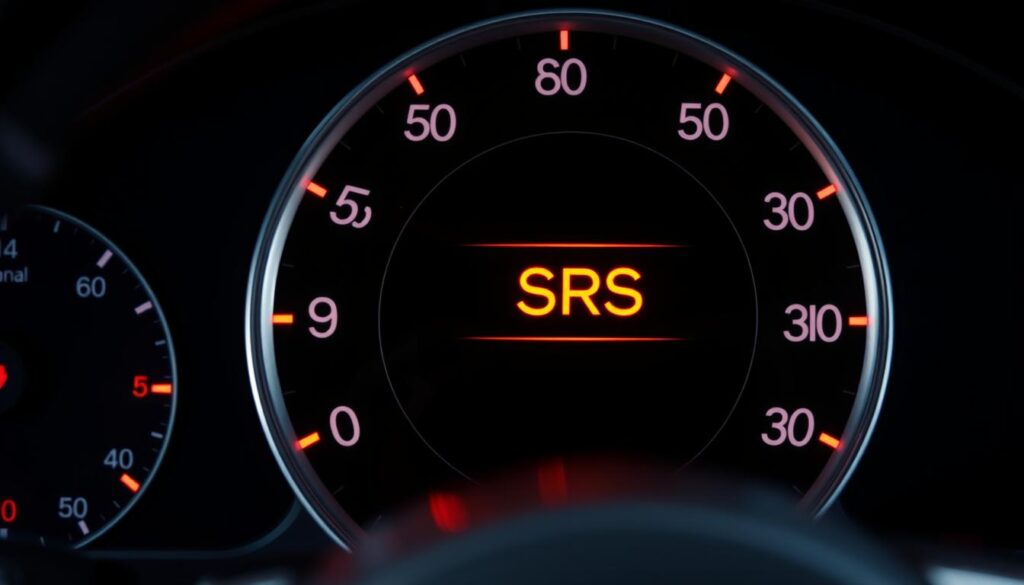
The airbag warning light is the most common indicator of a restraint system malfunction
Recognizing the warning signs of a restraint system malfunction is crucial for maintaining your vehicle’s safety. Audi has designed multiple indicators to alert drivers when this critical safety system isn’t functioning properly.
Dashboard Warning Indicators

Airbag Warning Light
A red airbag symbol that remains illuminated indicates a fault in the restraint system. This is the most common and direct warning sign.

Text Warnings
Modern Audis display text messages like “Restraint System Malfunction” or “Airbag System Fault” in the instrument cluster or MMI display.
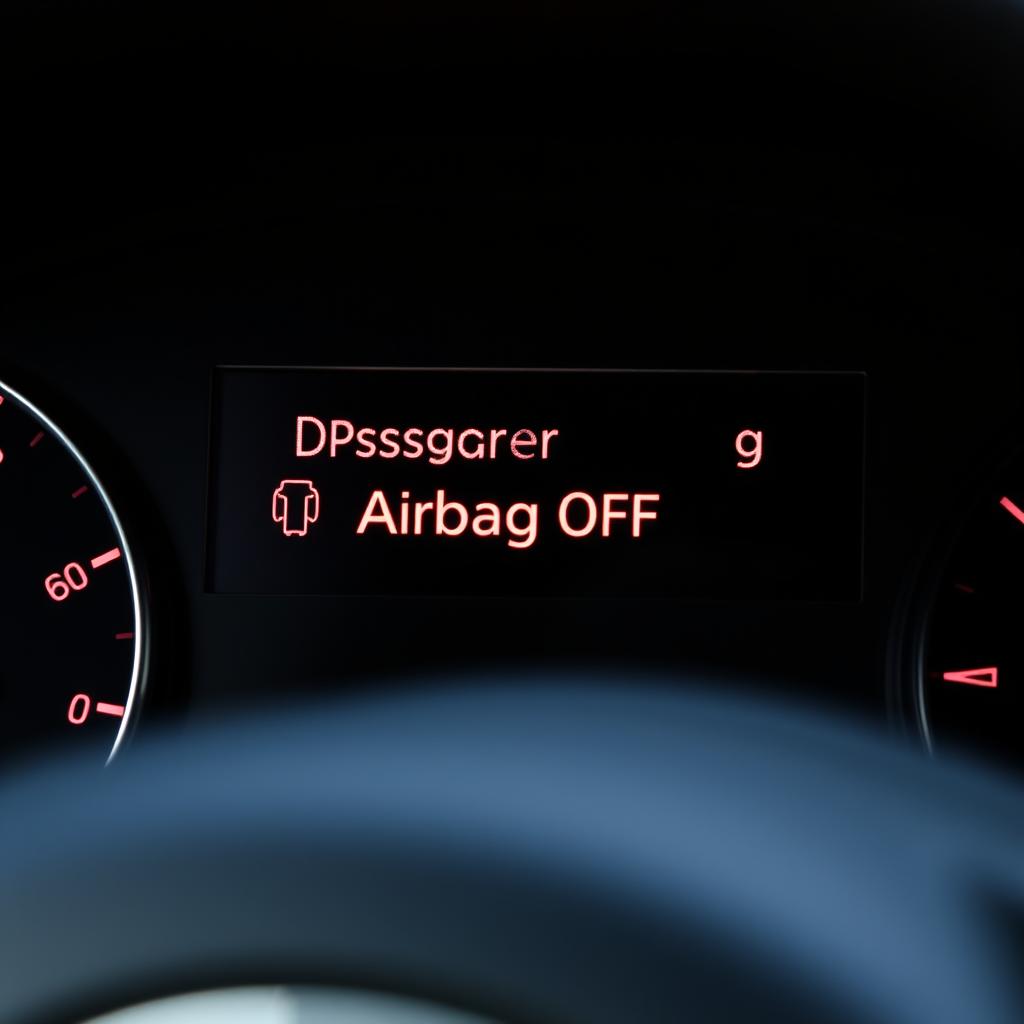
Passenger Airbag Indicators
Unexpected illumination of the “Passenger Airbag OFF” light when the seat is occupied may indicate a malfunction in the occupant detection system.
Other Observable Symptoms
- Intermittent Warnings: Warning lights that appear and disappear often indicate loose connections or intermittent wiring issues
- Warning After Service: Airbag warnings appearing immediately after vehicle service suggest disturbed connections during maintenance
- Seatbelt Abnormalities: Unusual seatbelt retraction behavior or warning chimes may indicate pretensioner issues
- Multiple Warning Lights: When restraint system warnings appear alongside ABS or ESP warnings, it may indicate a more complex electrical issue
Never ignore restraint system warning lights. While some causes may be minor, the potential safety implications of a non-functioning airbag system during an accident are severe. Always have these warnings diagnosed promptly by qualified technicians.
Diagnostic Procedures for Audi Restraint System Malfunctions

Diagnosing restraint system malfunctions in Audi vehicles requires specialized tools and expertise. The process follows a systematic approach to identify the exact cause of the warning indicators.
Professional Diagnostic Process
- Fault Code RetrievalTechnicians connect an Audi-specific diagnostic tool (such as VCDS, ODIS, or Audi-approved scanners) to the OBD-II port to retrieve stored fault codes from the airbag control module. These codes provide specific information about which component is malfunctioning.
- Visual InspectionBased on the fault codes, technicians inspect relevant components, looking for damaged wiring, loose connections, water intrusion, or physical damage to sensors. This often involves removing seat covers, trim pieces, or other components to access hidden parts.
- Circuit TestingUsing multimeters and specialized testing equipment, technicians verify the electrical integrity of the system, checking for proper resistance, voltage, and continuity in the wiring harnesses and components.
- Component TestingIndividual components like crash sensors, the airbag control module, and seat occupancy sensors may be tested separately to verify their functionality.
- Software AnalysisIn modern Audis, technicians may check for software updates or programming issues that could cause system malfunctions.
Important Safety Note
Never attempt to diagnose or repair restraint system issues yourself unless you have proper training and equipment. The system contains explosive components that can deploy unexpectedly if handled incorrectly, potentially causing serious injury.
Common Diagnostic Tools
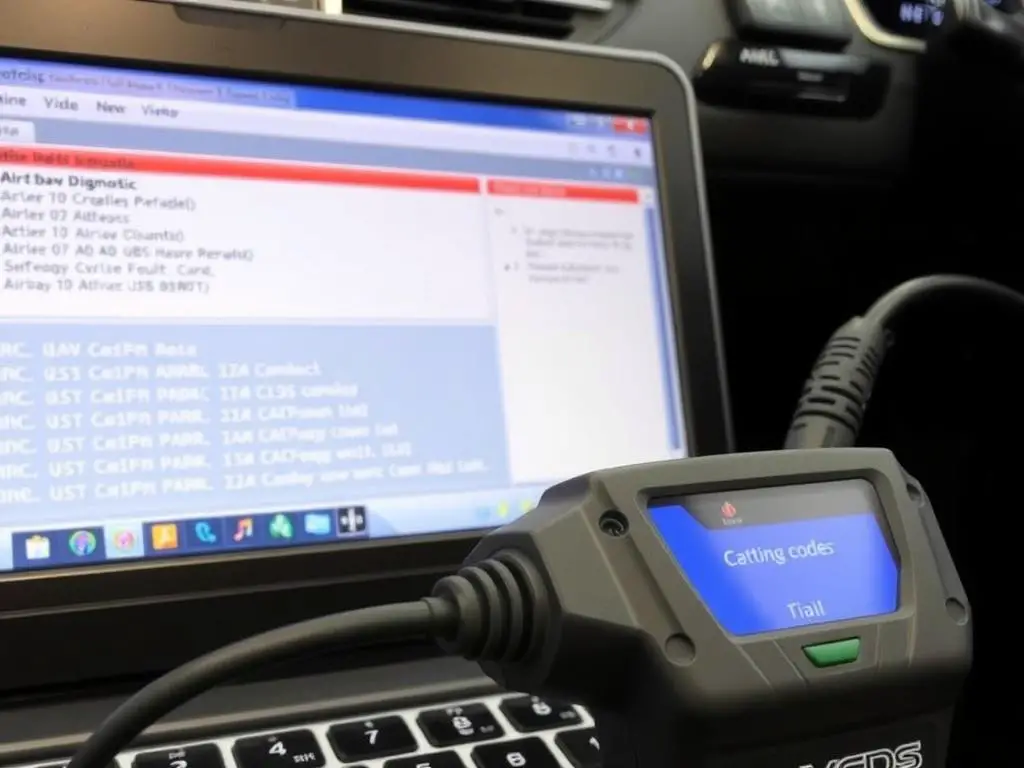
VCDS (VAG-COM)
Popular third-party diagnostic system specifically designed for Volkswagen Group vehicles, including Audi. It provides comprehensive access to all vehicle systems, including detailed restraint system diagnostics.
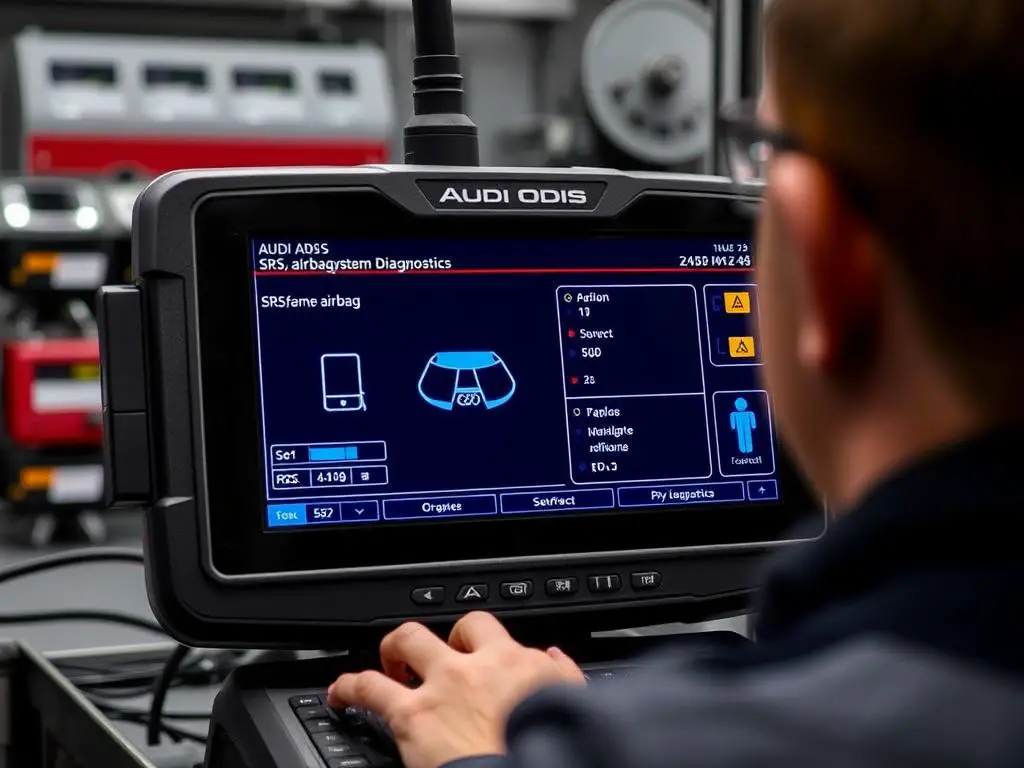
Audi ODIS
The factory diagnostic system used by Audi dealerships and authorized service centers. ODIS provides the most comprehensive diagnostic capabilities, including programming and coding functions.
Need Professional Diagnosis?
Restraint system malfunctions require specialized diagnostic equipment and expertise. Our Audi-certified technicians can accurately diagnose your vehicle’s issues and provide safe, effective solutions.
Repair Solutions and Cost Estimates

Repair solutions for Audi restraint system malfunctions vary widely depending on the specific issue identified during diagnosis. Costs can range from relatively minor for simple connection issues to significant for major component replacements.
Common Repair Solutions
| Issue | Repair Solution | Estimated Cost Range | Repair Time |
| Loose connections | Reconnect and secure wiring harnesses | $80-150 | 0.5-1 hour |
| Damaged wiring harness | Repair or replace affected wiring sections | $150-400 | 1-3 hours |
| Faulty crash sensor | Replace sensor and calibrate system | $200-500 | 1-2 hours |
| Seat occupancy sensor failure | Replace sensor mat in seat | $350-800 | 2-4 hours |
| Clockspring failure | Replace steering wheel clockspring | $300-600 | 1-2 hours |
| Airbag control module failure | Replace or repair/reset module | $400-1,200 | 1-3 hours |
| Software issues | Update control module software | $100-250 | 0.5-1 hour |
Cost-Saving Options
For certain components like the airbag control module, repair services exist that can rebuild your existing unit rather than replacing it with a new one. This can save 40-60% compared to new OEM parts while maintaining safety and reliability.
Factors Affecting Repair Costs
- Vehicle Age and Model: Newer models with more advanced systems often have higher component costs
- Repair Location: Dealership services typically cost more than independent Audi specialists
- Component Accessibility: Some components require significant disassembly to access, increasing labor costs
- Multiple Issues: Often, several components may need attention simultaneously
- Parts Selection: OEM vs. aftermarket parts (though OEM is strongly recommended for safety systems)
Important Safety Warning
Never attempt to reset airbag warning lights without properly diagnosing and repairing the underlying issue. Doing so could leave you with a non-functional restraint system that fails to deploy in an accident.
Safety Implications and Recommended Actions

The restraint system in your Audi is a critical safety feature designed to protect occupants during accidents. Malfunctions in this system can have serious safety implications that shouldn’t be ignored.
Potential Consequences of Ignoring Restraint System Warnings
Safety Risks
- Non-deployment of Airbags: Airbags may fail to deploy during an accident
- Delayed Deployment: System may react too slowly to provide adequate protection
- Unexpected Deployment: Airbags could deploy without an impact, causing injuries or accidents
- Seatbelt Pretensioner Failure: Seatbelts may not tighten properly during a collision
- Reduced Overall Protection: The integrated safety system may not function as designed
Recommended Actions When Warning Lights Appear
- Don’t Panic, But Don’t IgnoreWhile a restraint system warning requires attention, it doesn’t necessarily mean your vehicle is unsafe to drive short distances. However, the issue should be addressed promptly.
- Check for Recent TriggersConsider if anything might have caused the warning to appear, such as recent service work, moving items under seats, or battery issues.
- Schedule Professional DiagnosisContact an Audi dealership or qualified independent specialist to diagnose the specific issue. Avoid driving the vehicle extensively before diagnosis.
- Follow Through with RepairsOnce diagnosed, complete the recommended repairs promptly to restore full safety functionality.
- Verify ResolutionAfter repairs, ensure the warning light no longer appears and that the system has been properly reset and tested.
Preventive Maintenance Tips
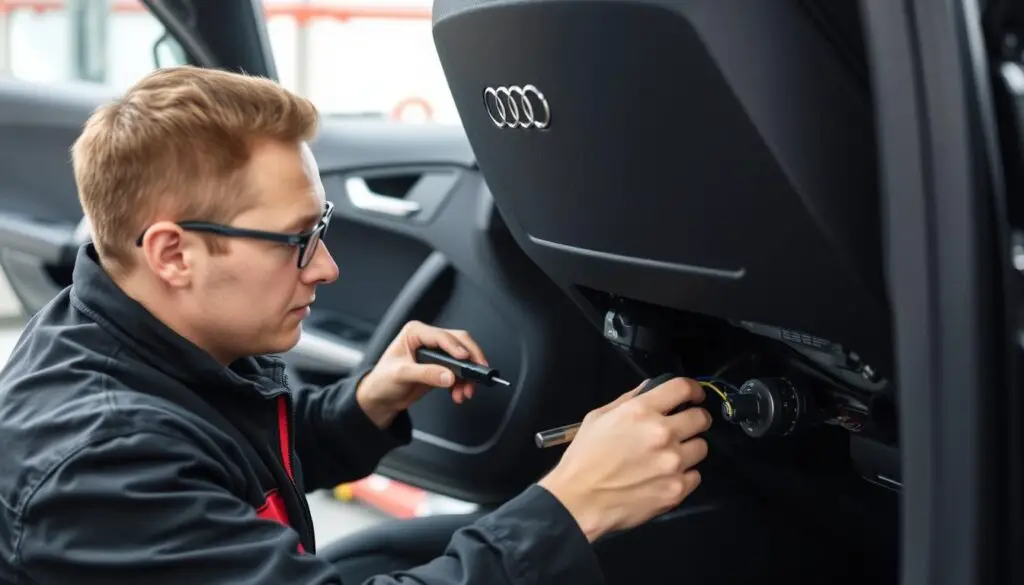
While some restraint system issues are unavoidable, proper maintenance and awareness can help prevent many common problems. Following these preventive measures can help maintain your Audi’s safety systems in optimal condition.
Regular Maintenance Practices
- Follow Service Schedules: Adhere to Audi’s recommended maintenance intervals, which include safety system checks
- Battery Maintenance: Keep your battery in good condition, as voltage issues can trigger false warnings
- Careful Interior Cleaning: Avoid using excessive water around seats and dashboard areas where sensors and modules are located
- Seat Care: Be gentle with seat adjustments and avoid placing heavy objects under seats where wiring is often located
- Address Water Leaks: Promptly repair any water leaks, as moisture can damage electronic components
What to Avoid
- DIY Electrical Work: Never attempt to repair airbag or restraint system components yourself
- Seat Modifications: Avoid aftermarket seat covers or modifications that could interfere with seat sensors
- Ignoring Minor Issues: Address intermittent warnings promptly before they become major problems
- Using Incorrect Parts: Always use OEM or equivalent quality parts for any repairs near restraint system components
- Disconnecting Battery Carelessly: Follow proper procedures when disconnecting the battery to avoid system errors
Professional Maintenance Recommendations
Scheduled Safety System Checks
Consider having your Audi’s restraint system professionally checked every 2-3 years, even if no warning lights are present. This preventive measure can identify potential issues before they become serious problems.
After-Accident Inspections
Following any accident, even minor ones, have your restraint system professionally inspected. Impact sensors and other components may be affected even if airbags didn’t deploy.
Used Vehicle Purchases
When purchasing a used Audi, always have the restraint system thoroughly checked as part of your pre-purchase inspection. Previous accidents or improper repairs may not be immediately apparent.
Audi-Specific Recalls and Common Model Issues

Over the years, Audi has issued several recalls related to restraint system components. Being aware of these model-specific issues can help you identify if your vehicle might be affected by a known problem.
Notable Audi Restraint System Recalls
| Year | Affected Models | Issue | Recall Action |
| 2017-2018 | A4, A5, Q5 | Passenger occupant detection system (PODS) may malfunction | Software update and sensor replacement |
| 2015-2016 | A3 Sedan and Cabriolet | Side airbag inflator may rupture during deployment | Replacement of side airbag inflators |
| 2013-2015 | A4, A5, Q5, Allroad | Front airbags may not deploy properly in certain crashes | Airbag control unit software update |
| 2012-2013 | Q5 | Sunroof glass panel may break during deployment of head curtain airbag | Replacement of sunroof glass panel |
| 2006-2008 | A3 | Passenger seat occupancy sensor may fail | Replacement of sensor mat in passenger seat |
Common Model-Specific Issues
A4/S4 (B8/B8.5)
- Passenger occupancy sensor failures
- Seat wiring harness issues
- Clockspring failures in steering wheel
Q5/SQ5
- Side impact sensor connection problems
- Control module software glitches
- Seat belt pretensioner faults
A3/S3
- Under-seat wiring harness damage
- Airbag control module failures
- Side airbag sensor issues
Check Your VIN for Recalls
You can check if your Audi is affected by any restraint system recalls by entering your Vehicle Identification Number (VIN) on the NHTSA website or contacting your local Audi dealership. Recall repairs are performed free of charge by authorized dealers.
Conclusion
The restraint system in your Audi represents one of the most critical safety features in your vehicle. When functioning properly, it provides potentially life-saving protection during accidents. A restraint system malfunction warning should never be ignored, as it indicates a compromise in this essential safety network.
While some causes of restraint system malfunctions may be relatively simple and inexpensive to fix, such as loose connections or minor wiring issues, others may require more extensive repairs. In all cases, proper diagnosis by qualified technicians using specialized equipment is essential to accurately identify and resolve the specific problem.
Remember that preventive maintenance, awareness of model-specific issues, and prompt attention to warning signs can help maintain your Audi’s restraint system in optimal condition. Your safety and that of your passengers depends on these sophisticated systems working flawlessly when needed most.

